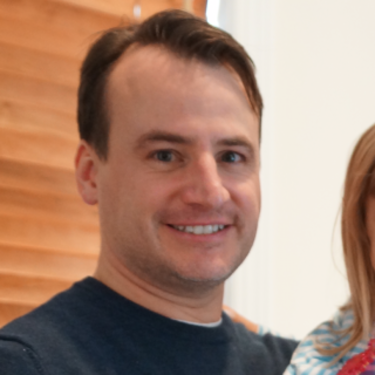How do you tell your patient, or an entire community, “There’s nothing to worry about”?
As physicians, we’ve all had patients that have had personal health concerns that were unjustified and perhaps related to anxiety or a misperception. Nevertheless, we do our due diligence and muster our resources to investigate the patient’s concerns. After all the testing and exams have been done and we can’t find any objective or organic explanation for the patient’s concern, the conversation goes one of two ways. Either they are relieved and grateful for our care and attention and leave reassured that everything is fine, or they refuse to believe the results of our testing, examinations, and judgment.
Knowing how difficult it can be to reassure an individual patient there is nothing to worry about, imagine trying to convince and bolster an entire community or municipality that everything is fine and nothing about their everyday life is endangering their long-term health.
Early in 2022, a small community in New Jersey was in the news for concern about an abnormal number of brain tumors that have been diagnosed in people that graduated from a specific high school. According to news reports, community efforts led by alumni and families identified 121 graduates and staff with a variety of benign and malignant brain tumors. These concerns were reported to state health officials and the CDC and investigations were conducted to see if a true “cluster” of disease existed.
In April and May, government officials conducted testing for radiation and radon and found levels to be within acceptable limits. More than $220,000 was spent on 83 radon detectors around the school property — even though, according to the American Cancer Society, radon is not considered an exposure risk for any type of benign or malignant primary brain tumor, though it is a known cause of lung cancer. Concerned citizens felt the testing done was not adequate. In October, parents of current students did their own testing and presented findings of samples taken from dust, soil, and window caulk demonstrating the presence of carcinogens. However, no link has been made to an increased risk of benign or malignant brain tumors.
According to The New York Times reporting, New Jersey’s health department investigation concluded it would be “statistically ordinary for about 120 former students and staff members to have developed brain tumors in the decades since the school was built in 1967.” Despite evidence that the number of brain tumors detected is within acceptable statistical limits, the community and its leaders continue to look for the cause of a problem that actually may not be a problem.
The CDC defines a true cancer cluster to be a “greater-than-expected number of cancer cases that occurs within a group of people in a geographic area over a period of time.” This definition has been proven to be an effective measuring stick over time in identifying public health risks. The history of medicine is full of examples of disease outbreaks that started as small, isolated reports that ultimately were proven to be a true cause-and-effect health crisis. Radon’s association with lung cancer, mesothelioma's association with asbestos, and the neurologic effects of lead-based paint all started as small, isolated clusters that grew into solid scientific cause-and-effect relationships that ultimately led to major public health response and changes. The data, mathematics, and pathophysiology ultimately proved these examples to be true.
At the same time, during the early initial reports of health concerns, each of these examples was met with skepticism and denial by parties that may have been responsible for the exposure. Epidemiological data and statistics can be very powerful and accurate in these situations. A well-done study with adequate statistical power and sample size that has controlled for confounding factors is able to determine if what is going on in any particular area is truly a unique event or is consistent with what you would expect from a given community sample of that size.
But at the same time, there must exist a balance between the data and the subjective health concerns of a community. These investigations can’t necessarily wait for a complete perfect set of graphs and spreadsheets that explain a given situation. Even the largest outbreak or environmental link to a disease starts somewhere, and in the beginning, that somewhere will be too small to reach statistical significance. This is particularly interesting if the disease we’re talking about is exceptionally rare, such as a primary malignant brain cancer like glioblastoma.
In fact, one of the major obstacles in research for treating rare cancers such a glioblastoma is because the cancer is so lethal and the numbers of patients so small that it becomes very difficult to enroll patients in trials to establish progress in treatments. The same could be true of trying to identify a suspected cluster of a very rare cancer in a small community.
In 2016, after a concern about a cluster of childhood brain cancer in Idaho, Congress passed Trevor’s Law, which strengthened federal agency coordination and accountability when investigating these potential “clusters” of disease.
Leadership in this area is working to de-emphasize statistical significance as the main criterion for investigating suspected cancer clusters, instead including and considering data such as mortality and EHR data, neighborhood patterns of cancer, and even community-created lists of individuals with cancer diagnoses, like that in New Jersey. While examination of the data at this point does not indicated a causal relationship between brain tumors and an environmental exposure at the high school, we do need to respect these concerns and claims when they arise because history has proven that we never know.
There is a huge difference between a physician that practices for individual patients and our colleagues that make their careers in public health. As hospital or private practitioners, we take care of 5,000 patients, one at a time. For the public health physician, they take care of one patient, made up of 5,000 individuals.
Dr. Gruber is a Neurosurgeon in Paducah, KY. His clinical interests include brain tumor management and robotic spine surgery. Find him on Twitter @DrThomasGruber and LinkedIn. Dr. Gruber is a 2022–2023 Doximity Op-Med Fellow.







